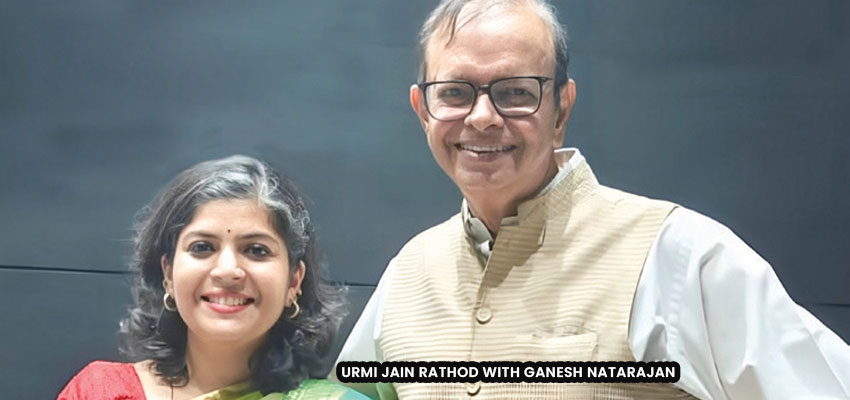A Book Writer’s Lament

The book Viksit India: A poetic view, suggests that much more needs to be done for people through love and inclusion, entrepreneurship development, and building a place for a “Global Bharat” in the world
There are many of us who still read books in the days of WhatsApp, LinkedIn and X, and some who love to write. Having grown up in a little village called Tatisilwai near Ranchi, in the 1960-70s, the only good part of my school education was an amazing AngloIndian English teacher who instilled the love of language and literature in all of us.
Many articles and 16 books later, I still retain the passion for writing, though reading is dwindling with too many distractions. And, at a time when there are too many debutant writers doing self-publishing, enabled by new publishers who take money rather than pay royalty, getting books to sell is not easy. It’s only when any book crosses 10,000 copies sold—it happened with only four books of mine—there is reason to celebrate.
In that context, the book we just released in Pune, was written as an experiment at a time when we are getting too much hype around how all our problems as a nation will be solved when we meet our tryst with a “Viksit Bharat” destiny by 2047.
A young Hindi poet Urmi Jain Rathod and I collaborated to do a slim book of prose, limericks and poetry titled “Viksit India: A poetic view”, and it has been a pleasure to research all the themes that can go into making the “developed nation” theme a reality. Written in 10 sections, each touching upon four or five themes, the book starts with a vision of India and covers the evolution of the country—our recent successes in physical and digital infrastructure development, the progress in key growth segments including manufacturing and IT, and our struggles in agriculture and healthcare.
The future of India lies clearly in three distinct spheres of activity — genuine national transformation, internal inclusion and external manifestation of the new India, as move towards our tryst with the Viksit destiny
It also examines matters which are very much a work in progress, namely law and order, climate change, sports and fitness, and artificial and dual intelligence. It also suggests, much more needs to be done for people through love and inclusion, entrepreneurship development and building a place for a “Global Bharat” in the world. Of all these themes, and beyond the writing of this book, the future of India lies clearly in three distinct spheres of activity — genuine national transformation, internal inclusion and external manifestation of the new India, as move towards our tryst with the Viksit destiny.
The transformation we are enjoying with roads, railways and airports, have to clearly move to upgraded levels of infrastructure, without potholes after every monsoon and bridges falling, and we need our cities, villages and peri-urban locations to reach a level when, “The poor don’t need to buy cars and the rich use public transportation”— a quote from a previous book India’s pathways to success
Digital India, the Jan Dhan, Aadhar, Mobile (JAM) trinity, the UPI and digital payments environment, which are the pride and joy of Indians everywhere, need to evolve into an internet economy, when there is uniform bandwidth available for digital commerce in every panchayat and village of the country.
On the inclusion front, it is gratifying to see the recent World Bank report, which talks of the reducing disparity between rich and poor. But, for many of us working in the social sector, the aspirations of the poor are still far from being met with a uniform capability to upskill, earn, and invest in the future without reliance on handouts. As eminent social evangelist, Chetna Gala Sinha of Mann Deshi Foundation, said in a recent conference that we cannot do poor things for the poor, they need to feel they can stand up and be counted. This is true not just for class, but also castes and communities who cannot feel excluded from the rising prosperity of the nation.
Finally, on India’s perception in the external world, in the wake of Operation Sindoor, a number of steps including major outreach by our External Affairs Minister and multi-party delegations have been taken, and the India view on terrorism has been noted everywhere.
However, as a developing nation looking for a permanent place at the high table of the league of nations, we need to work assiduously to ensure that India is not bracketed with anyone, and we are seen as a worthy partner, not just for trade and the size of our population, but because we genuinely add value economically and intellectually and as a stable and well meaning democracy to the other nations in the world.
Back to the making of Viksit India, I believe that what makes a book compelling read is its easy style of prose, tongue in cheek humour, and some poignant and thought provoking poetry, all of which has gone into this book. We have tried not to labour any one point too much, cast doubts on idle boasts that pervade the media channels these days, and still appreciate the good that has happened in the past and the work that is going on at present. Our attempt has been to develop a picture of India that is realistic—points out the challenges and yet leaves the reader with enormous hopes that the aspirations of a nation will not go unrewarded.